Annelids of the eastern Australian abyss collected by the 2017 RV 'Investigator' voyage
- PMID: 33708002
- PMCID: PMC7930015
- DOI: 10.3897/zookeys.1020.57921
Annelids of the eastern Australian abyss collected by the 2017 RV 'Investigator' voyage
Abstract
In Australia, the deep-water (bathyal and abyssal) benthic invertebrate fauna is poorly known in comparison with that of shallow (subtidal and shelf) habitats. Benthic fauna from the deep eastern Australian margin was sampled systematically for the first time during 2017 RV 'Investigator' voyage 'Sampling the Abyss'. Box core, Brenke sledge, and beam trawl samples were collected at one-degree intervals from Tasmania, 42°S, to southern Queensland, 24°S, from 900 to 4800 m depth. Annelids collected were identified by taxonomic experts on individual families around the world. A complete list of all identified species is presented, accompanied with brief morphological diagnoses, taxonomic remarks, and colour images. A total of more than 6000 annelid specimens consisting of 50 families (47 Polychaeta, one Echiura, two Sipuncula) and 214 species were recovered. Twenty-seven species were given valid names, 45 were assigned the qualifier cf., 87 the qualifier sp., and 55 species were considered new to science. Geographical ranges of 16 morphospecies extended along the eastern Australian margin to the Great Australian Bight, South Australia; however, these ranges need to be confirmed with genetic data. This work providing critical baseline biodiversity data on an important group of benthic invertebrates from a virtually unknown region of the world's ocean will act as a springboard for future taxonomic and biogeographic studies in the area.
Keywords: Echiura; Polychaeta; Sipuncula; Biodiversity; Biogeography; Marine Parks; Tasman Sea; deep sea; lower-bathyal.
Laetitia M. Gunton, Elena K. Kupriyanova, Tom Alvestad, Lynda Avery, James A. Blake, Olga Biriukova, Markus Böggemann, Polina Borisova, Nataliya Budaeva, Ingo Burghardt, Maria Capa, Magdalena N. Georgieva, Christopher J. Glasby, Pan-Wen Hsueh, Pat Hutchings, Naoto Jimi, Jon A. Kongsrud, Joachim Langeneck, Karin Meißner, Anna Murray, Mark Nikolic, Hannelore Paxton, Dino Ramos, Anja Schulze, Robert Sobczyk, Charlotte Watson, Helena Wiklund, Robin S. Wilson, Anna Zhadan, Jinghuai Zhang.
Figures
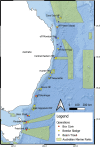
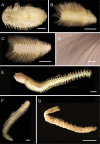
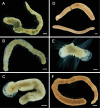

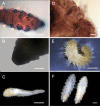
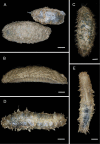


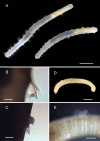
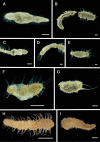

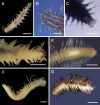
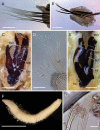
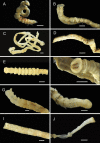
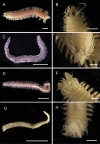
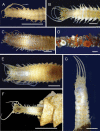
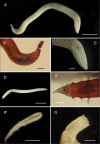
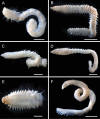
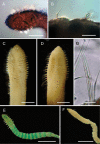
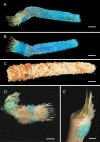
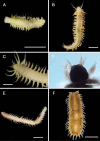
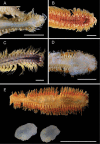
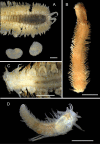
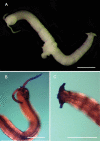
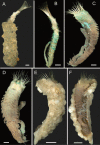
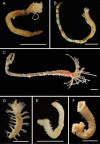
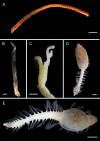
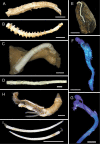
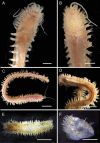
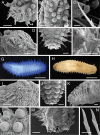
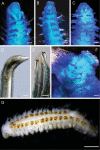
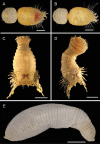
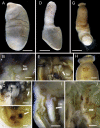
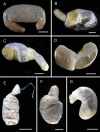
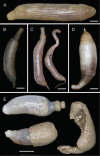
References
-
- Aguirrezabalaga F, Ceberio A. (2006) Flabelligena gascognensis sp. nov. (Polychaeta: Acrocirridae), a new species from the Capbreton Canyon (Bay of Biscay, NE Atlantic). Scientia Marina 70: 14–147. 10.3989/scimar.2006.70s1141 - DOI
-
- Aguirrezabalaga F, Gil J. (2009) Paraonidae (Polychaeta) from the Capbreton Canyon (Bay of Biscay, NE Atlantic) with the description of eight new species. Scientia Marina 73: 631–666. 10.3989/scimar.2009.73n4631 - DOI
-
- Aguirrezabalaga F, Parapar J. (2014) Deep-sea Ampharetidae (Polychaeta) from Capbreton Canyon (north-east Atlantic) with the description of a new species. Journal of the Marine Biological Association of the United Kingdom 94(5): 947–967. 10.1017/S0025315413001422 - DOI
-
- Alalykina IL. (2018) Composition of deep-sea polychaetes from the SokhoBio expedition with a description of a new species of Labioleanira (Annelida: Sigalionidae) from the Sea of Okhotsk. Deep Sea Research Part II – Topical Studies in Oceanography 154: 140–158. 10.1016/j.dsr2.2018.04.004 - DOI
-
- Alalykina IL. (2020) Polychaeta: a review on the deep-sea benthic polychaetes along the NW Pacific. In: Saeedi H, Brandt A (Eds) Biogeographic Atlas of the Deep NW Pacific Fauna. Advanced Books. Pensoft Publishers, Sofia, 527 pp. 10.3897/ab.e51315 - DOI
LinkOut - more resources
Full Text Sources
Other Literature Sources
